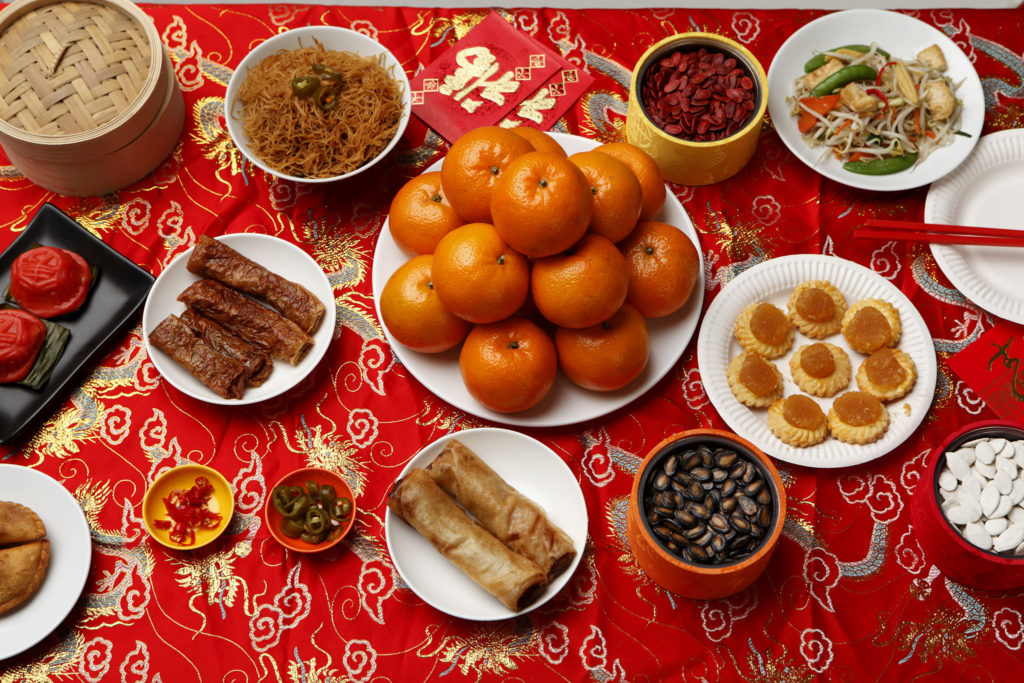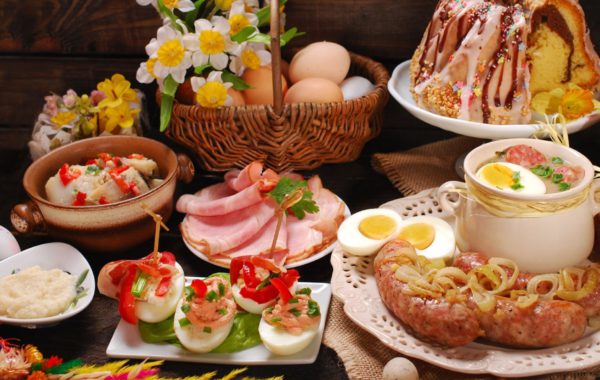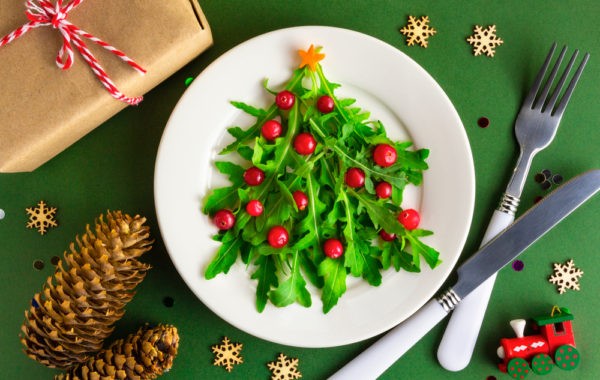Lunar New Year, or the Spring Festival, is one of the biggest celebrations in the world, where millions of people who observe the holiday come together with their friends and families to wish for good fortune, prosperity, longevity, and happiness in the coming year. The Lunar New Year falls on a different date each year, but the celebration typically lasts 15 consecutive days and is celebrated with lots of traditional food that’s prepared, served, and eaten in symbolic ways. This year, it starts on Lunar New Year’s Eve, beginning on January 29, and ending on February 12, 2025. The first day of Lunar New Year is called the Spring Festival, and the final day is the Lantern Festival and is annually linked to one of 12 zodiac animals – each possessing their own character traits. The animals are assigned based on a 12-year cycle, making 2025 the Year of the Sanke.
Why is it the Year of the Snake?
The Chinese zodiac follows a 12-year cycle, with each year associated with a specific animal in the following sequence: Rat, Ox, Tiger, Rabbit, Dragon, Snake, Horse, Goat, Monkey, Rooster, Dog, and Pig. A person’s zodiac sign is determined by their birth year. In 2025, many newborns will belong to the Year of the Snake. Those born in the previous lunar year were Dragons, while children born after the Lunar New Year in 2026 will be associated with the Horse, continuing the cycle.
Here are a few symbolic dishes that always grace the dining table during the celebration, so you can ring in the Lunar New Year with the best luck!
1. Nian Gao – translated as a “new year cake” or just “year cake,” Nian Gao is made of glutinous rice flour and/or sweet glutinous rice flour, and can be either sweet or savory depending on which region of China you are in. In the South, rice cake is usually on the savory side and can be sliced, fried, steamed, and cooked in soup. While in the North, sweet rice cakes are more common and flavored with ingredients like jujubes, red beans,s and brown sugar. Nian means year and Gao translates to higher up, symbolizing a wish for every year to be “higher” and better than the last.
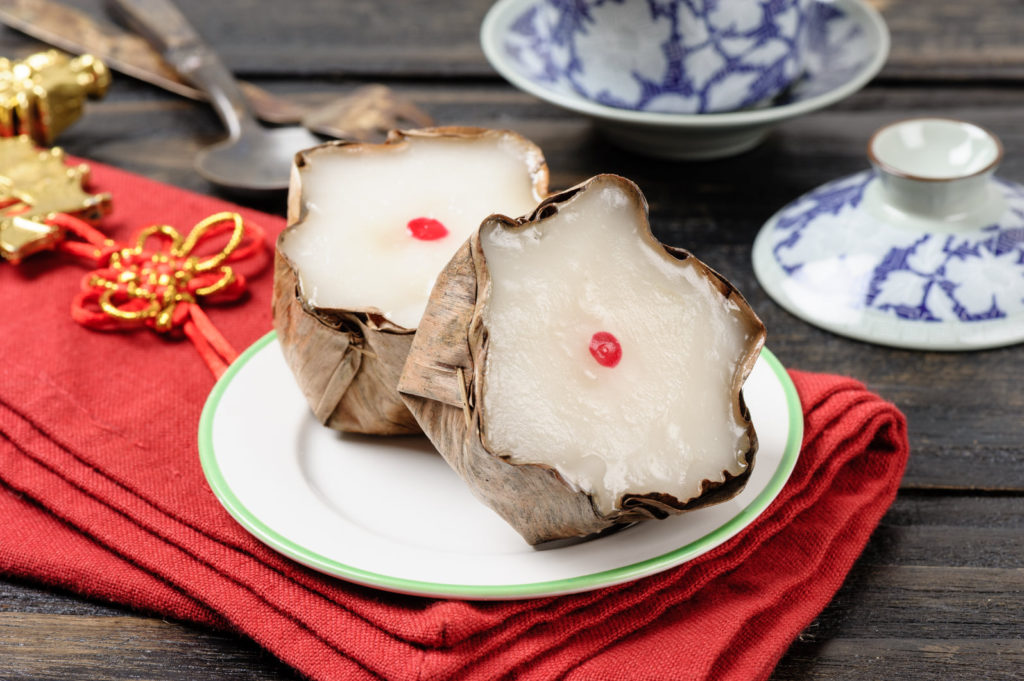
2. Whole Fish (Steamed) – One of the most common traditional dishes eaten during the Lunar New Year, is steamed whole fish. In Chinese, the word “fish” is pronounced “yu,” which translates to “surplus,” so eating fish symbolizes wealth and prosperity in the coming year.
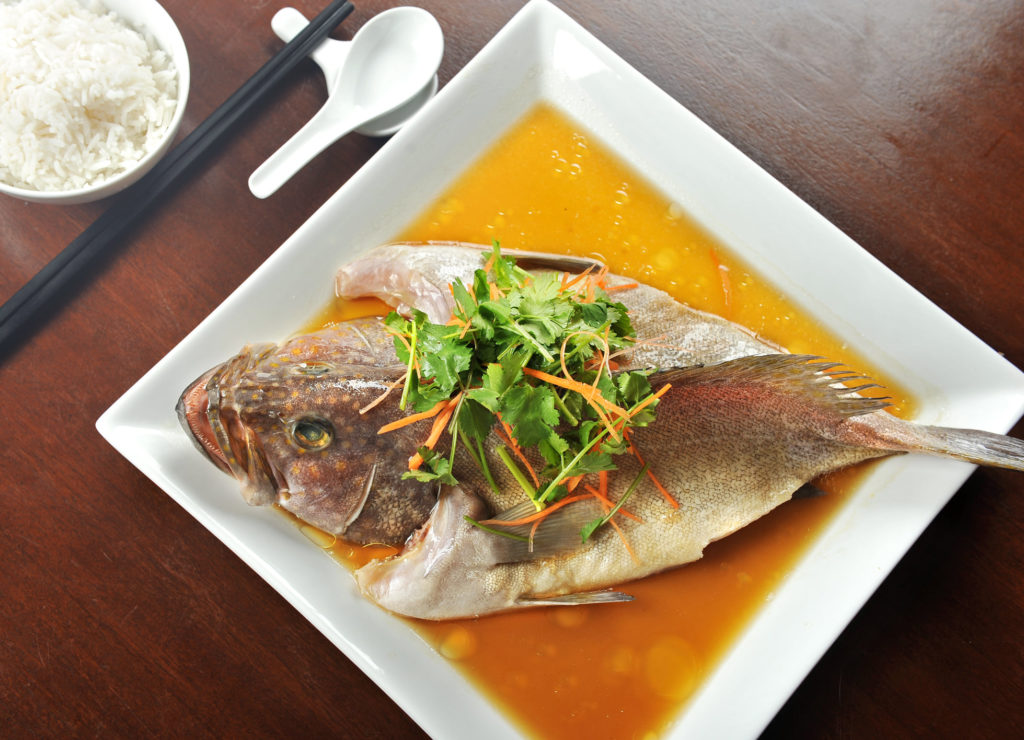
3. Whole Chicken – The overarching theme of the Lunar New Year is a reunion of friends and family, and a whole chicken is another visual signifier of that unity. When chicken is cooked during Spring Festival, it’s traditionally first offered to one’s ancestors for blessings and protection.
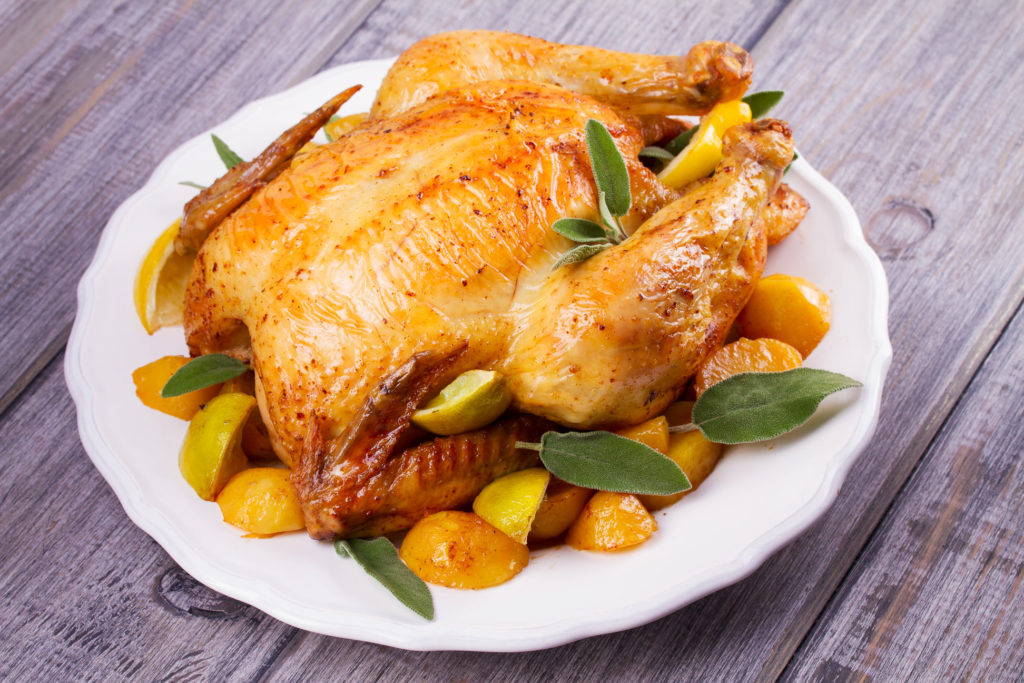
Check out our whole roast chicken recipe here.
4. Longevity Noodles – Noodles are almost mandatory during the new year and other celebrations like birthdays and chang shou mian (or longevity noodles) are a must-have on the dining table for Lunar new year as well. They can be served fried or boiled in broth, along with different meats and add-ins with different meanings. These noodles are left uncut and are meant to be slurped all in one go, rather than chewed. The longer the noodle, the longer your life!
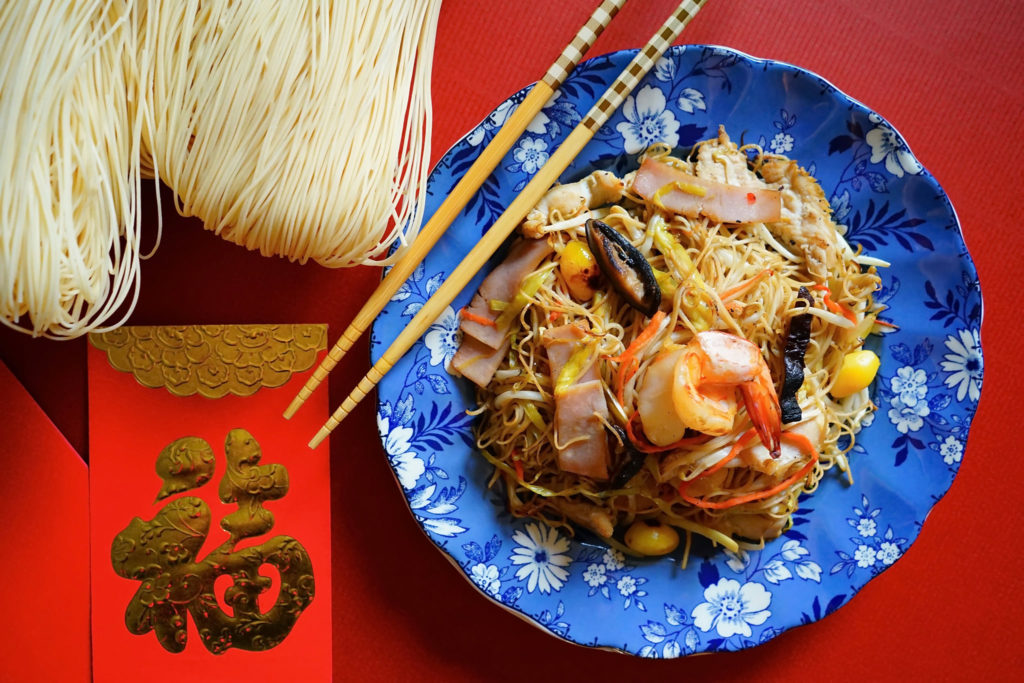
Check out our Vietnamese-style noodles recipe here.
5. Dumplings – While we love dumplings any time of the year, but for the new year, they are a big deal. Not only is making them a bonding activity for the whole family, but they also symbolize wealth and togetherness. Dumplings are shaped like ancient Chinese gold ingots, so it’s said that the more dumplings you eat, the more wealth you will have in the new year.
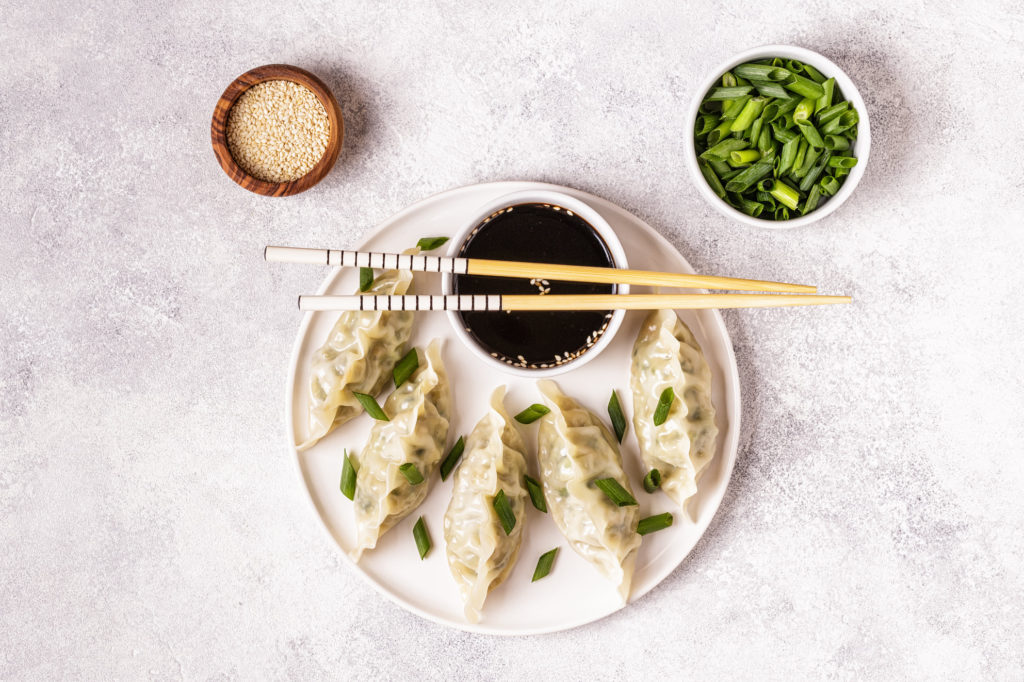
6. Spring Rolls: These are an important culinary part of the celebration for the Spring Festival, hence the name. Their shape is reminiscent of gold bars and therefore symbolizes wealth and prosperity. Spring rolls are typically stuffed with vegetables or meat and wrapped in thin dough wrappers. The rolls are then fried until golden brown.
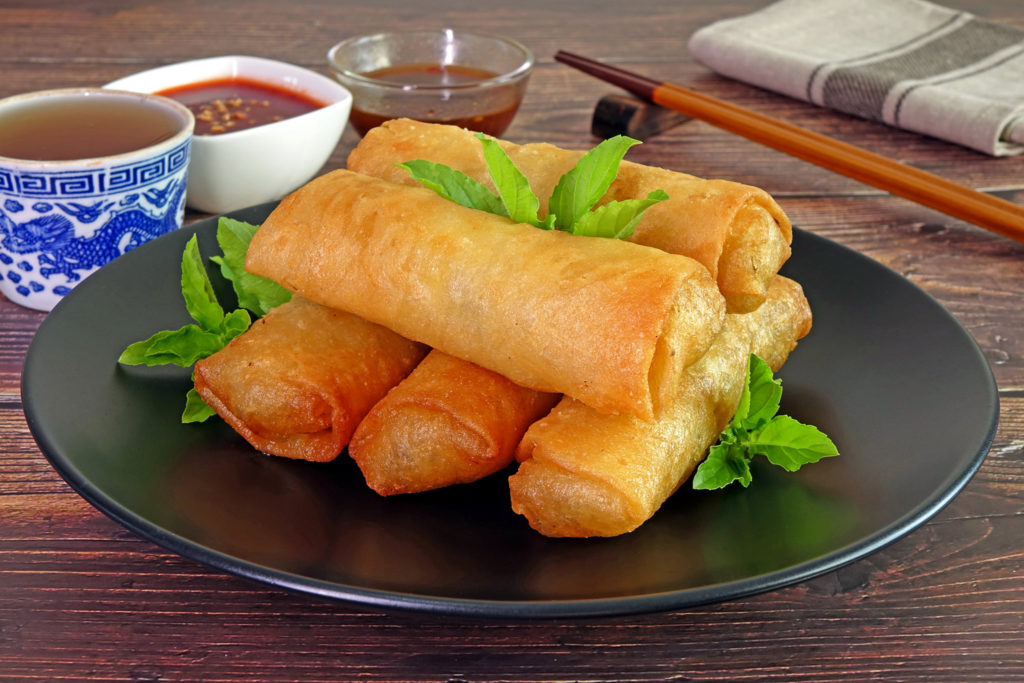
7. Sweet Rice Balls – Tangyuan or sweet rice balls, are typically eaten during both the Lantern Festival and the Spring Festival. Their round shape symbolizes family togetherness and completeness. They are made with rice powder and can be filled with a variety of ingredients such as fruit, nuts, brown sugar, and red bean.
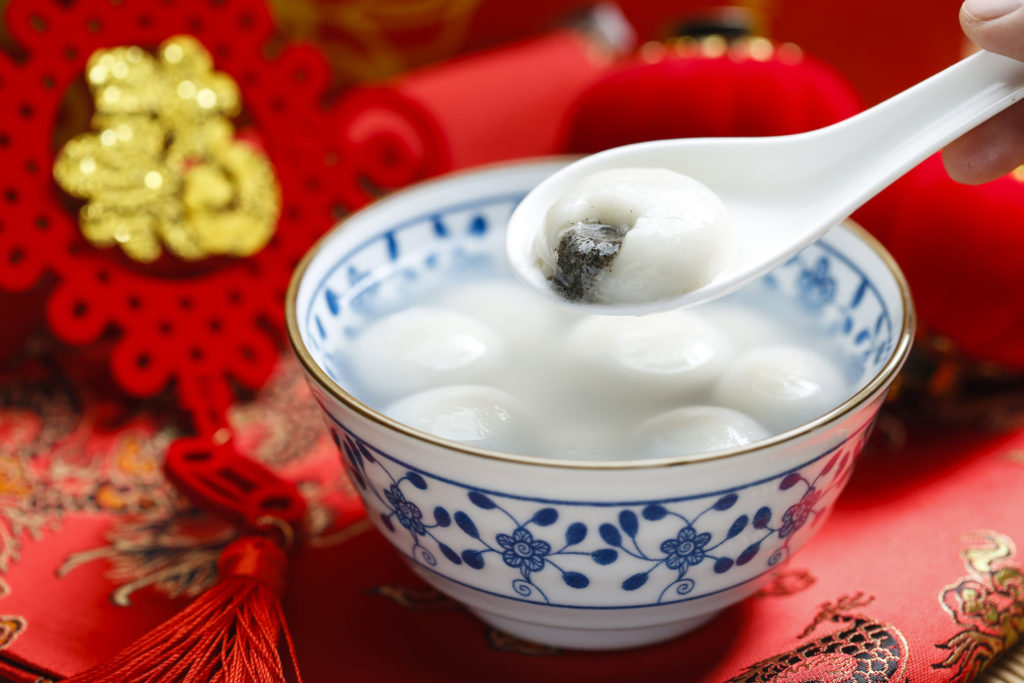
8. Shrimp: Shrimp and lobster are both revered as symbols of fortune and good luck, so they make a great addition to your Lunar New Year menu. The Cantonese word for shrimp sounds like laughter (“ha”), so it signifies happiness over time.
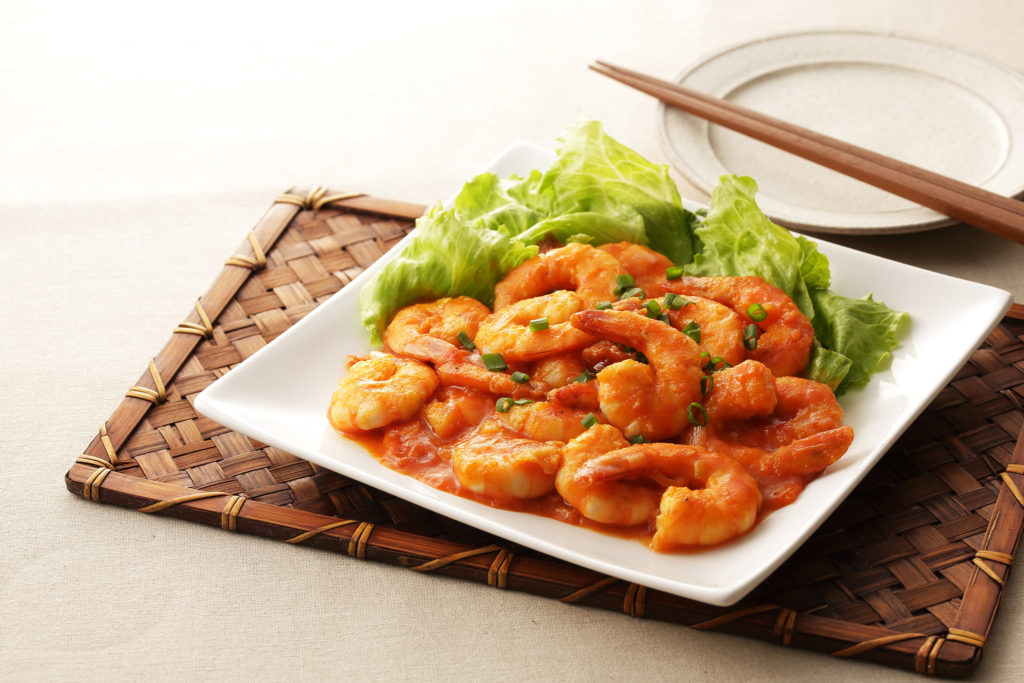
9. Tangerines – Tangerine is the most old-school good fortune fruit there is in Chinese tradition, but you will also spot oranges, pomelos, and other citrus fruits at the table. The name sounds similar to the Chinese words for “luck” and “success,” so they’re often served at the end of a meal or given as gifts to relatives during visits. Their roundness and golden color also signify fullness and wealth. It’s believed that the more you eat during Lunar New Year, the more wealth they’ll bring, so you might want to start peeling those oranges! Enjoy 😊
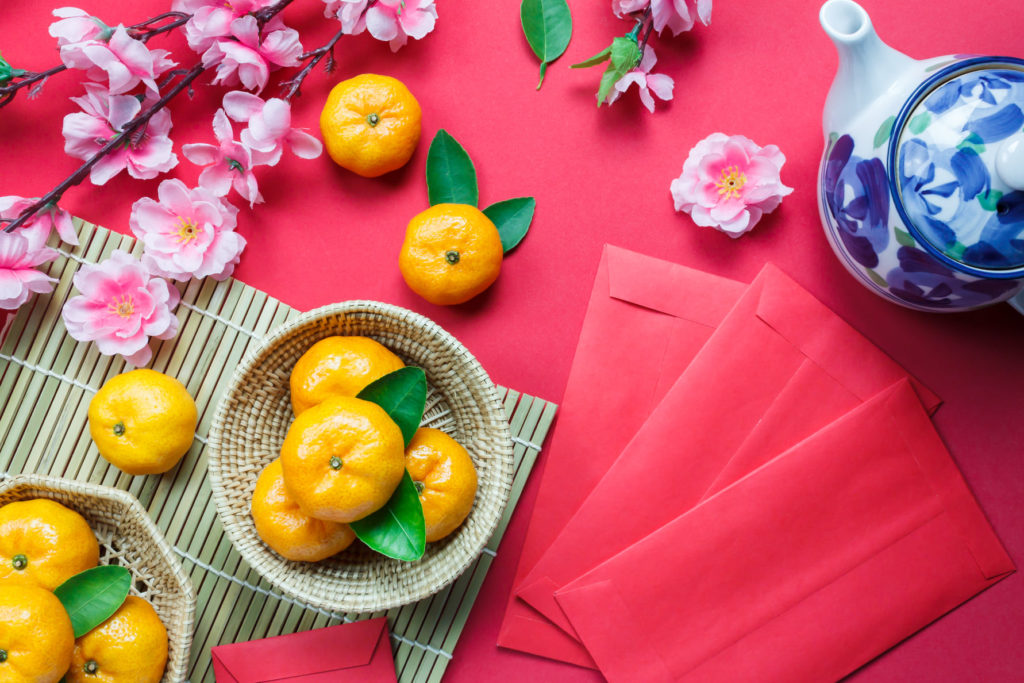
This story and the gallery have been updated with new information since its original publish date.
For the latest travel news and updates, food and drink journeys, restaurant features, and more, like us on Facebook or follow us on Instagram. Read more on Travel and Food Network
Trending on TFN


